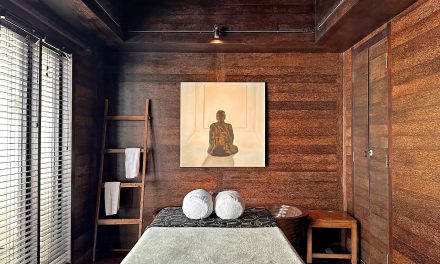If you’re planning an adventure to Mount Batur in Bali, you may find yourself caught up in the breathtaking views, the allure of sunrise treks, and the promise of stunning landscapes. But it’s crucial to prepare yourself for a challenge that might surprise you—altitude sickness. Having recently embarked on this adventurous journey myself, I learned firsthand just how essential it is to know how to prevent altitude sickness at Mount Batur. Let’s dive into some insights, practical advice, and a few personal anecdotes to help you tackle this beautiful yet challenging trek.
Understanding Altitude Sickness
Altitude sickness, also known as acute mountain sickness (AMS), can occur when you ascend to higher elevations too quickly. Above 2,500 meters (8,200 feet), the risk increases, and since Mount Batur stands at around 1,717 meters (5,633 feet), it’s essential to be aware of the potential effects.
I remember waking up at the crack of dawn, filled with excitement. Like many trekkers, I was ready to conquer Mount Batur for the sunrise. But amid the excitement, I realized that understanding altitude sickness was just as vital as packing the right gear.
Signs and Symptoms
When I reached the halfway point, the air was getting noticeably thinner. Suddenly, I felt a bit lightheaded, and a mild headache set in. Knowing the symptoms, I recognized I was experiencing the early signs of altitude sickness. Common symptoms include:
– Headache
– Nausea
– Dizziness
– Fatigue
– Shortness of breath
Being aware of these signs helped me tune into my body and act accordingly.
Practical Advice for Prevention
1. Acclimatization is Key
Give your body time to adjust. If possible, spend a day or two in Ubud or another low-lying area before you ascend. This adjustment period can do wonders in reducing the risk of altitude sickness.
I spent a couple of days exploring nearby rice terraces and soaking in the local culture before heading to Mount Batur. Those slower-paced days allowed me to acclimatize, and I felt more prepared as a result.
2. Stay Hydrated
Drink plenty of water before and during your trek. Dehydration can exacerbate the symptoms of altitude sickness.
Before the trek, I made it a point to hydrate consistently. I carried a sturdy water bottle, which not only kept me refreshed but also reinforced a positive habit of staying hydrated—something that many people overlook when they’re busy focusing on the climb.
3. Take It Slow
It’s easy to get caught up in the excitement and feel the need to rush, but taking it slowly is crucial. Listen to your body. Take breaks and don’t hesitate to pause and breathe deeply.
During the hike, I found myself stopping to take in the surroundings—every pause allowed my body to adjust, and I enjoyed the beauty of the rising sun over the volcano.
4. Avoid Alcohol and Heavy Meals
Before your trek, steer clear of alcohol and heavy meals, which can worsen dehydration and slow your body’s adjustment to the altitude.
On the night prior to my hike, instead of indulging in a big meal or a few drinks, I opted for a light dinner with plenty of fruits. This choice paid off when I was tackling the steep paths of Mount Batur.
5. Consider Medication
If you’re particularly concerned about altitude sickness, consult with a healthcare professional before your trip. Some may recommend medications like acetazolamide.
I spoke to a friend who had taken this route, and she claimed it made her ascent much smoother and assisted with her acclimatization.
6. Know When to Descend
It’s crucial to be aware of your body and recognize when to turn back. If symptoms worsen or become severe, descending is the safest option.
On our trek, a member of our group became increasingly drowsy, and we all agreed that as tough as it was, we needed to head back. The camaraderie during the ascent shifted to a mutual respect for everyone’s health, which made for a safe and supportive experience.
Relatable Scenarios
Imagine standing at the base, gazing up at Mount Batur’s majestic peak, brimming with excitement. You start your trek, fueled by passion and adrenaline—then suddenly, amidst the beauty of nature, you feel a wave of nausea wash over you. That scenario isn’t uncommon! But knowing how to take care of yourself can turn that moment around.
Whether you’re a seasoned trekker or a newbie trying to escape the hustle of everyday life, the unpredictability of altitude sickness is the great equalizer. It’s a reminder that while our spirits yearn for new adventures, our bodies need care and attention.
Final Thoughts
Trekking to Mount Batur for the sunrise is an unforgettable experience, but understanding and preventing altitude sickness can make all the difference. By taking the time to acclimatize, staying hydrated, taking things slow, and respecting your body’s limits, you’ll be setting yourself up for success.As you plan your trip, remember—a little preparation goes a long way. With the right mindset and proactive measures, you’ll be well on your way to enjoying the incredible vistas from the top of Mount Batur without the worry of altitude sickness.So lace up those hiking boots, pack your water, and get ready for an adventure that will be etched in your memory for years to come! Happy trekking!






